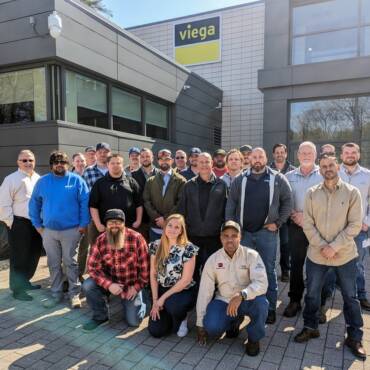What is Struvite and How to Remove and Prevent It
Struvite buildup is a significant concern in the wastewater treatment process, if not managed properly, it can cause costly downtime and equipment damage. In this article, we will explain what struvite is, how it impacts systems for industrial applications, and the best methods for its removal and prevention.
Struvite: The Efficiency Killer
Struvite, a compound of magnesium, ammonium, and phosphate (MAP), forms when these elements combine under specific conditions. In wastewater systems, it can cause severe blockages in pipes, pumps, and other equipment, decreasing system efficiency, raising maintenance costs, and potentially damaging equipment.
As struvite accumulates in pipes, heat exchangers, pumps, and other process equipment it forces equipment to work harder, reducing heat transfer efficiency and increasing operating costs. Untreated struvite can also corrode pipes, causing leaks and expensive repairs. Preventing buildup is essential for plant managers and maintenance professionals to avoid these problems.
What is Struvite Made Of?
Struvite consists of magnesium, ammonium, and phosphate. It forms when these elements, commonly found in wastewater, react under certain conditions such as high pH levels and the presence of organic materials. Struvite commonly forms in wastewater treatment plants and food processing facilities, especially those that handle high-nitrogen waste.
What Causes Struvite Buildup?
Struvite forms when high levels of magnesium, ammonium, and phosphate accumulate, often from organic waste or sewage. Certain bacteria also facilitate its formation.
- Magnesium: Found in water, especially hard water.
- Ammonium: A byproduct of biological processes in wastewater.
- Phosphate: Found in detergents, fertilizers, and industrial discharges.
These components combine to form struvite crystals that gradually build up in pipes and equipment.
Is Struvite Harmful to Systems?
Yes, struvite buildup can severely damage equipment. The crystals can block pipes and valves, reduce flow, and strain pumps, leading to:
- Increased energy consumption: Struvite buildup forces equipment to work harder, raising energy costs.
- Operational downtime: Equipment failure from blockages causes unplanned shutdowns and costly repairs.
- Corrosion and leaks: Struvite can corrode pipes, leading to leaks and requiring expensive repairs.
Struvite buildup in wastewater treatment plants can also impact effluent quality, leading to environmental compliance issues.
How to Identify Struvite Buildup
Signs of struvite buildup include:
- Higher energy costs due to increased strain on equipment.
- Reduced system performance with blocked pipes or pumps.
- Corrosion, leading to leaks.
- Frequent breakdowns or shutdowns due to clogging.
How to Remove and Prevent Struvite Buildup
Prevention is Key
Preventing struvite formation is the most effective strategy:
- Maintain optimal water conditions: Regularly monitor pH, temperature, and nutrient levels.
- Use chemical treatments: Magnesium-based solutions can help control struvite formation.
- Improve wastewater treatment: Optimizing filtration and aeration reduces ammonia and phosphate concentrations.
Removal Techniques
Once struvite forms, it needs to be removed to avoid further damage:
- Mechanical cleaning: Scraping, brushing, or high-pressure washing can clear minor buildup.
- Chemical descaling: Products like ScaleBreak® biodegradable descalers dissolve struvite without harming equipment or the underlying metal alloys.
- Hydroblasting: High-pressure water jetting is effective for stubborn deposits.
Regular Maintenance
Routine maintenance is crucial for preventing struvite buildup. Regular cleaning and water system monitoring help keep systems free from harmful deposits. Goodway’s descaling solutions are designed to ensure smooth operations and reduce downtime.
Next Steps
Preventing and removing struvite is crucial for industries with wastewater or water-intensive operations. By maintaining water quality, using preventive measures, and employing effective descaling solutions, you can avoid the costly consequences of struvite buildup.
Learn more about how Goodway’s descaling products can help you manage struvite in your systems. Don’t let struvite impact your operations—take control today!
Read more about chemical descaling
Whether you require installation, repair, or maintenance, our technicians will assist you with top-quality service at any time of the day or night. Take comfort in knowing your indoor air quality is the best it can be with MOE heating & cooling services Ontario's solution for heating, air conditioning, and ventilation that’s cooler than the rest.
Contact us to schedule a visit. Our qualified team of technicians, are always ready to help you and guide you for heating and cooling issues. Weather you want to replace an old furnace or install a brand new air conditioner, we are here to help you. Our main office is at Kitchener but we can service most of Ontario's cities
Source link

